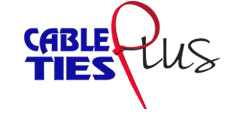A Quick Guide to Proper Crimping
While some wiring jobs require a delicate soldering hand, many systems may be managed using wiring connectors and terminals. As soldering is very often a time-consuming task, utilizing connectors will save you time on installation, and you avoid the hazards of hot solder damaging surrounding system components. Whether it’s a car stereo, light-switch, or mains connection, wire connectors and terminals are a safe and reliable solution.
All that being said, proper crimping is necessary to avoid hazards. Wires can shift or even come loose. Poor crimping can also lead to substandard connections, reducing flow and efficiency, negatively affecting signal continuity. Worse, loose or exposed wire can quickly become a fire hazard. Here at Cable Ties Plus we’d like to offer a quick guide to terminals, so you can crimp with confidence.
First and foremost a crimping tool is a necessity. Proper crimping results in a “cold weld’’, which is actually stronger than a connection made via soldering. This cannot be achieved with plyers! We offer a number of high quality crimping tools that will help you create an excellent, long-lasting connection.
Second, you must choose the correct AWG terminal size for your given wire(s). Your first step will be to strip the wire. The amount of exposed wire should roughly equal the length of the barrel; around ¼” is usually a good target. The stripped wire should fit into the connector with little or no free space. Make sure you insert the wire so that the insulation meets the barrel, ensuring no bare wire is exposed near the barrel entry point.
Finally, now you are ready to crimp the connection. It is very important to consult the gauge markings on your crimping tool. There are different notches for gauge, and often these will be color- coded to match the insulation color on the connector or terminal. Make sure the terminal is horizontal, barrel-side up (a brazed-seam design will afford some leeway here) and position the tool perpendicular, closer to the ring or spade. Now simply apply force! Don’t worry – you can’t ‘over crimp’ a connection, so squeeze the tool as hard as possible.
Now tug at your wire to ensure a sturdy crimp, and easy as that, you have a safe and long-lasting wire connection! Be sure to trim any excessive wire emerging from the opposite end of the barrel. We hope you enjoyed our short guide, and if you have any questions on our products or proper installation, don’t hesitate to give us a call.


Comments are closed.